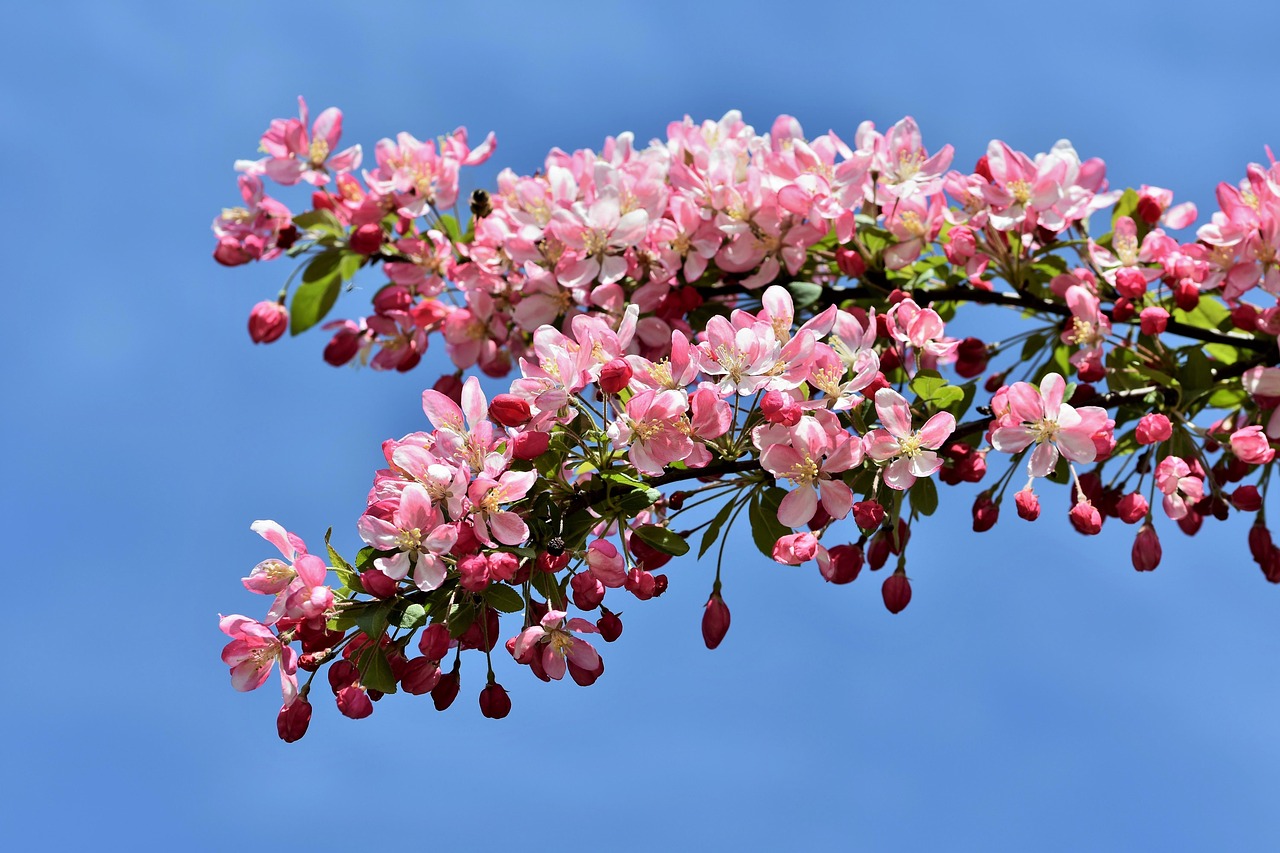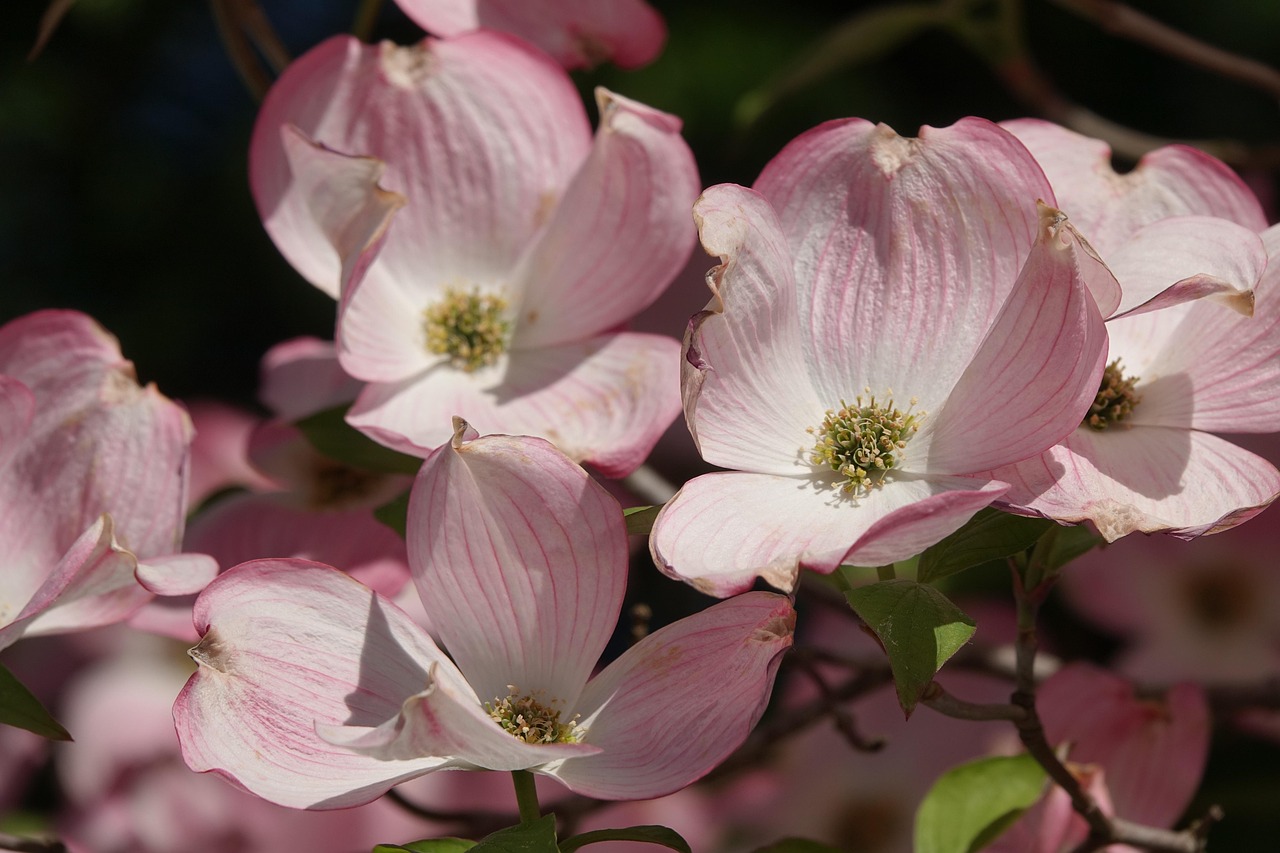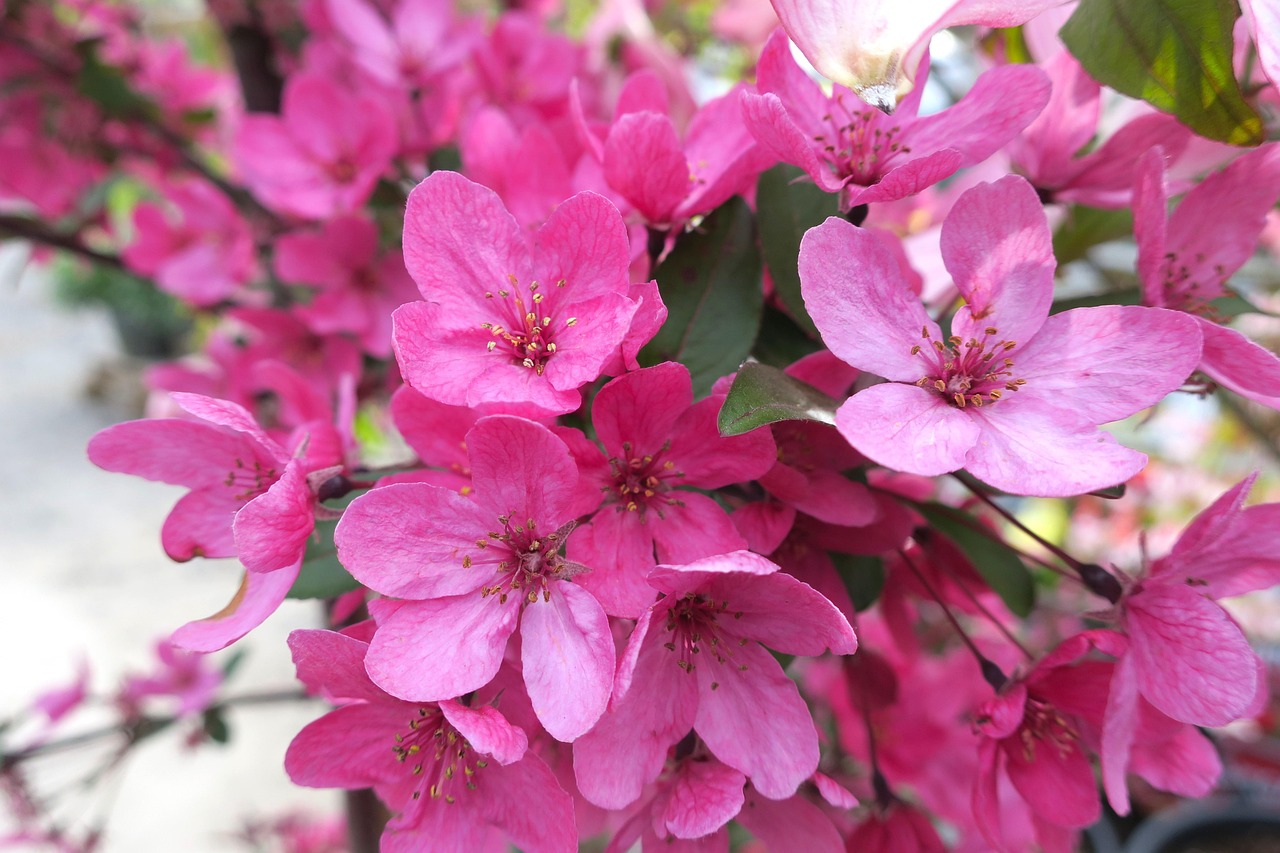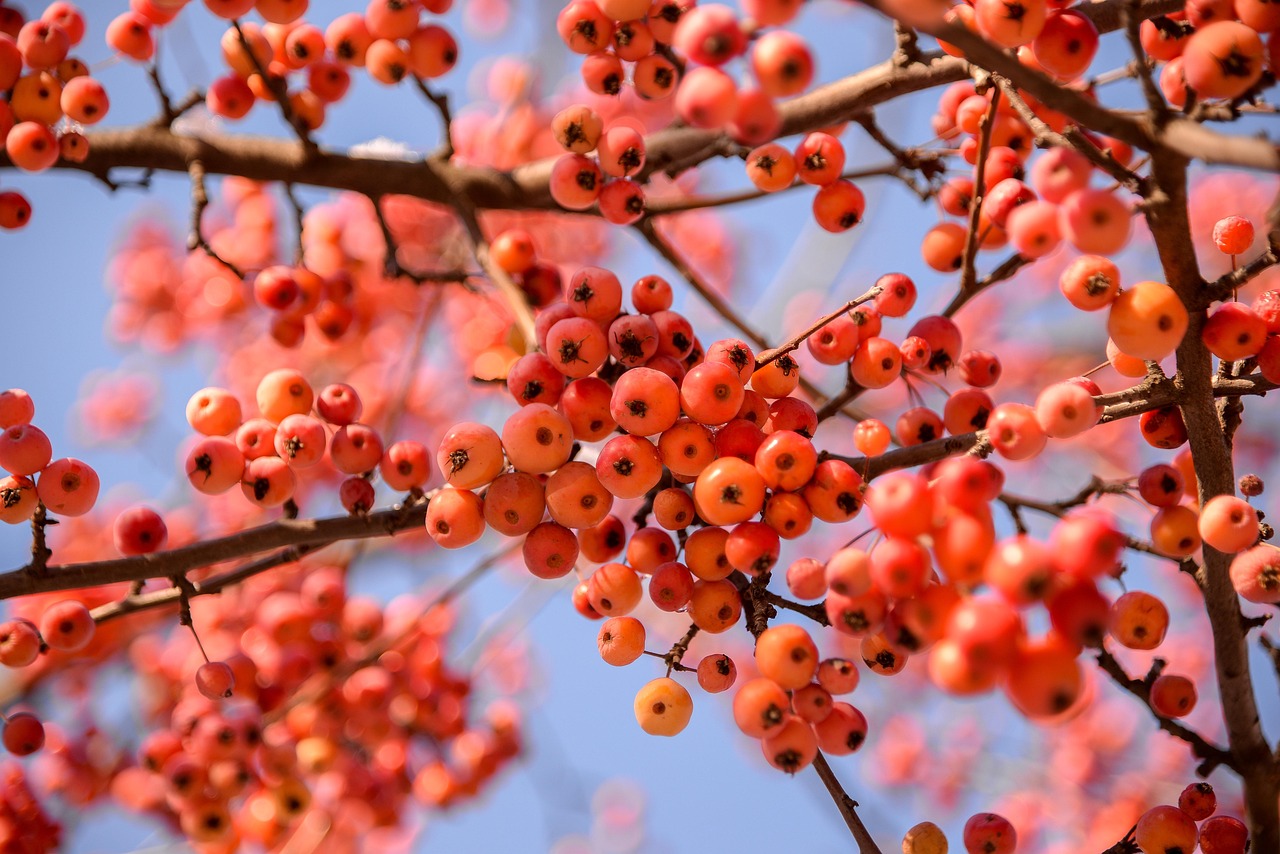Crabapple trees typically exhibit a moderate growth rate, averaging 1 to 2 feet per year. This growth allows them to develop a stunning display of colorful blossoms in spring, making them a popular choice for gardens and landscapes.
Understanding Crabapple Trees
Crabapple trees, known scientifically as Malus, are small to medium-sized deciduous trees that belong to the rose family. They are celebrated for their stunning spring blooms, colorful fruits, and attractive fall foliage. Their vibrant flowers can range from white to deep pink, creating beautiful landscapes during the blooming season.

These trees are not only aesthetically pleasing but also serve various ecological purposes. They attract pollinators like bees and butterflies, support local wildlife, and contribute to the overall biodiversity of garden spaces. The fruit produced by crabapple trees, although small and often tart, can be used in cooking or left for birds to enjoy.
Growth Rate of Crabapple Trees
The growth rate of crabapple trees can vary based on several factors including species, environmental conditions, and care practices. Generally, these trees grow at a moderate pace. Here are some key points regarding their growth:
- Most crabapple varieties reach a height of 15 to 25 feet.
- They typically spread between 10 to 20 feet wide.
- With proper care, they can live for several decades, with some species thriving for over 50 years.
Understanding the growth habits of crabapple trees is vital for those looking to incorporate them into their gardens. Their size and spread influence how they fit into various landscape designs. Additionally, knowing their growth rate helps in planning for maintenance and care throughout the seasons.

Factors Influencing Growth Rate
Several factors can significantly affect the growth rate of crabapple trees. Here are some of the most important ones:
| Factor | Description |
|---|---|
| Soil Quality | Well-drained, loamy soil enriched with organic matter promotes healthy growth. |
| Water Availability | Consistent moisture is essential; however, overwatering can lead to root rot. |
| Sunlight | Crabapple trees thrive in full sun, requiring at least six hours of direct sunlight daily. |
| Temperature | They prefer temperate climates and may struggle in extreme heat or cold. |
| Pest and Disease Management | Healthy trees grow faster; regular monitoring for pests and diseases is crucial. |
Providing the right conditions can help crabapple trees achieve their full potential. Regular maintenance practices such as proper watering, fertilization, and pruning will enhance their growth rate and overall health.
Choosing the Right Crabapple Variety
Selecting the right variety of crabapple tree can also influence the growth rate and flowering display. Some varieties are known for their more vigorous growth while others may be slower but offer unique characteristics. Here are a few popular varieties:

- Malus ‘Spring Snow’: Known for its stunning white flowers and rapid growth rate.
- Malus ‘Prairifire’: Features bright pink flowers and excellent disease resistance.
- Malus ‘Royal Raindrops’: Offers unique purple foliage along with beautiful pink blooms.
When selecting a crabapple tree, consider your local climate and the specific features you desire. Different varieties provide various colors and sizes of flowers, making it possible to choose one that best fits your landscape vision.
Caring for your crabapple tree properly will ensure it reaches its desired height and width while providing a spectacular display each spring. Understanding the growth rate and factors influencing it is key to successful gardening with this beautiful tree.
Planting Crabapple Trees
Planting crabapple trees correctly is crucial to ensure their healthy growth and vibrant displays in spring. The right planting technique can significantly influence the growth rate and longevity of these trees. Here are some essential steps to consider when planting a crabapple tree:

- Selecting the Site: Choose a location that offers full sun, as crabapple trees thrive best in direct sunlight for at least six hours a day.
- Soil Preparation: Test the soil for pH and nutrient levels. Crabapple trees prefer slightly acidic to neutral soil (pH 6.0 to 7.0).
- Digging the Hole: Dig a hole that is two to three times wider than the root ball and as deep as the root ball itself. This allows the roots to spread easily.
- Amending the Soil: Mix organic compost or well-rotted manure into the excavated soil to improve drainage and nutrient content.
- Planting the Tree: Place the tree in the center of the hole, ensuring that the top of the root ball is level with the ground surface. Fill in with soil and gently tamp down to remove air pockets.
- Watering: Water thoroughly after planting to help settle the soil around the roots. Keep the soil consistently moist during the first growing season.
- Mulching: Apply a layer of organic mulch around the base of the tree to retain moisture and suppress weeds.
Watering Requirements
Proper watering is essential for the healthy establishment and growth of crabapple trees. During the first few years after planting, young trees need consistent moisture. Here are some tips regarding watering:
- Water deeply rather than frequently. This encourages deeper root growth.
- Avoid waterlogging by ensuring proper drainage in the planting area.
- During dry spells, monitor soil moisture levels and water as needed, especially in the summer months.
- Reduce watering frequency once the tree is established, usually after two to three years.
Fertilization for Optimal Growth
Fertilization plays a critical role in promoting healthy growth and vibrant blooms in crabapple trees. It is essential to provide adequate nutrients, especially during the active growing season. Here are some guidelines for fertilizing crabapple trees:
- Timing: Fertilize in early spring just before new growth begins, or in late fall after leaf drop.
- Type of Fertilizer: Use a balanced fertilizer with equal parts nitrogen, phosphorus, and potassium (such as 10-10-10) or one formulated for flowering trees.
- Application: Follow package instructions for application rates based on the size of your tree. Avoid over-fertilization, which can lead to excessive leaf growth at the expense of flowers.
Pest and Disease Management
Crabapple trees can be susceptible to various pests and diseases that may affect their growth and blossoms. Effective management strategies are essential for maintaining tree health:
| Pest/Disease | Description | Control Measures |
|---|---|---|
| Apple Scab | A fungal disease causing dark spots on leaves, leading to early leaf drop. | Use resistant varieties, apply fungicides during wet weather, and remove fallen leaves. |
| Cedar-Apple Rust | A fungal disease that affects both cedar trees and apple trees, resulting in yellow-orange spots on leaves. | Remove nearby cedar trees if possible, apply fungicides, and maintain tree health. |
| Aphids | Small insects that suck sap from leaves, potentially causing curling or stunted growth. | Use insecticidal soap or introduce beneficial insects like ladybugs. |
| Japanese Beetles | Pests that feed on leaves and flowers, creating skeletonized foliage. | Handpick beetles or use traps; apply neem oil or insecticides if needed. |
Regular monitoring and early intervention can help prevent serious damage to your crabapple trees. Keeping an eye on their health will ensure a beautiful display each spring.
Pruning for Health and Aesthetics
Pruning is an important practice for maintaining crabapple trees. Proper pruning encourages healthy growth, improves air circulation, and enhances flower production. Here are some key points to consider when pruning:
- Timing: The best time to prune is late winter or early spring before new growth starts.
- Tools: Use sharp, clean pruning shears to make precise cuts and prevent injury to the tree.
- Cuts: Focus on removing dead or diseased branches, crossing branches, and any overcrowded areas to improve light penetration.
- Aesthetic Shaping: Maintain the natural shape of the tree while encouraging an open center for better air circulation.
Following these guidelines will not only keep your crabapple trees healthy but will also ensure they remain beautiful throughout their life cycle, providing splendid spring displays.
Common Varieties of Crabapple Trees
When considering crabapple trees for your landscape, it is important to know the different varieties available. Each variety has unique characteristics, including growth rate, flower color, and resistance to pests and diseases. Below are some popular varieties that gardeners often choose:
- Malus ‘Sargentii’: This variety grows to about 10-12 feet tall, featuring stunning pink flowers and small red fruits. It is also known for its exceptional fall color.
- Malus ‘Dolgo’: Known for its vigorous growth, this tree reaches 20-25 feet in height and produces white flowers followed by edible yellow-green fruit.
- Malus ‘Adirondack’: A compact variety that grows to about 15 feet tall. It displays pink flowers and is highly resistant to apple scab.
- Malus ‘Hopa’: This tree features bright red flowers in spring and grows to about 15-20 feet tall. Its small red fruits are a highlight in late summer.
- Malus ‘Lancelot’: Known for its upright growth and beautiful white blossoms, this variety reaches 15-20 feet in height and is favored for its disease resistance.
Selecting the right variety depends on your landscape needs, including space, desired aesthetic, and local climate. Some trees may be better suited for smaller gardens, while others thrive in larger spaces.
Environmental Considerations for Growth
Crabapple trees thrive best in specific environmental conditions. Understanding these factors can help ensure healthy growth and vibrant displays:
- Climate: Crabapple trees prefer temperate climates. They generally do well in USDA hardiness zones 4 through 8.
- Sunlight: Full sun is essential. Trees that receive less sunlight may produce fewer flowers and have slower growth rates.
- Soil Type: Well-drained loamy soil is ideal. Heavy clay soils can lead to root rot, while sandy soils may not retain enough moisture.
- Air Circulation: Good air circulation around the tree helps prevent fungal diseases. Avoid planting them too close to buildings or other trees.
Seasonal Care Throughout the Year
Caring for crabapple trees involves seasonal tasks that support their health and growth. Here’s a breakdown of what to do in each season:
Spring
In spring, as new growth begins, focus on the following:
- Inspect for pests and diseases that may have survived winter.
- Apply a balanced fertilizer to support new growth.
- Mulch around the base to retain moisture and suppress weeds.
Summer
During the summer months, maintain the health of your crabapple trees by:
- Regularly watering during dry spells, especially for young trees.
- Monitoring for signs of pests and taking appropriate action.
- Pruning any dead or damaged branches after flowering.
Fall
As fall approaches, consider these care tips:
- Collect fallen leaves to reduce disease risk.
- Avoid late-season fertilization to minimize tender growth before winter.
- If necessary, apply a fungicide to protect against diseases that thrive in damp conditions.
winter
During winter, protect your crabapple trees by:
- Wrapping young trees with burlap or tree guards to prevent damage from cold winds or animals.
- Avoiding heavy snow accumulation on branches by gently shaking off excess snow.
- Planning for spring pruning by assessing the tree’s structure during dormancy.
Benefits of Crabapple Trees in Landscaping
Crabapple trees offer numerous benefits beyond their stunning flowers. Their versatility makes them valuable additions to various landscape designs:
- Ornamental Appeal: Their vibrant blooms and colorful fruits provide visual interest throughout the seasons.
- Biodiversity Support: They attract pollinators such as bees and butterflies, enhancing local ecosystems.
- Shade Provision: As they mature, crabapple trees provide shade in gardens and yards, creating comfortable outdoor spaces.
- Wildlife Habitat: Their fruits serve as food for birds and other wildlife, contributing to ecological health.
Incorporating crabapple trees into your landscape can enhance not only the beauty of your garden but also its ecological value. Their adaptability allows them to fit into various design schemes, from formal gardens to naturalistic landscapes.
Maintenance Tips for Healthy Crabapple Trees
To ensure the longevity and vibrancy of your crabapple trees, regular maintenance is key. Here are additional tips to keep in mind:
- Regular Monitoring: Check your trees routinely for signs of pests or diseases. Early detection can save the tree from significant damage.
- Soil Testing: Conduct soil tests every few years to monitor pH levels and nutrient content. Adjust your soil amendments as needed based on the results.
- Proper Pruning: In addition to seasonal pruning, consider formative pruning when the tree is young. This helps establish a strong structure and encourages an attractive shape.
- Watering Practices: Be mindful of the tree’s water needs, especially during extreme weather conditions. Drought stress can negatively impact growth and flowering.
- Fertilization Schedule: Follow a consistent fertilization schedule, but avoid over-fertilizing, as this can lead to excessive growth and fewer flowers.
Crabapple Trees in Urban Settings
Crabapple trees are particularly well-suited for urban environments due to their adaptability and ornamental value. They can enhance city landscapes by:
- Improving Air Quality: Trees play a vital role in filtering pollutants from the air, contributing to healthier urban living conditions.
- Reducing Urban Heat: The shade provided by crabapple trees helps lower temperatures in urban areas, making streets and parks more comfortable.
- Enhancing Aesthetics: Their seasonal blooms create colorful displays that brighten cityscapes, attracting residents and visitors alike.
Choosing crabapple trees for urban planting not only beautifies the area but also fosters a connection between nature and city life. These trees can thrive in confined spaces, making them ideal for streets, parks, and residential yards.
Potential Challenges in Growing Crabapple Trees
While crabapple trees offer numerous benefits, they can also face challenges that gardeners should be aware of. Some common issues include:
- Susceptibility to Diseases: As mentioned previously, diseases like apple scab and cedar-apple rust can be problematic. Regular monitoring and preventative treatments are essential.
- Pest Infestations: Aphids and Japanese beetles are common pests that can affect crabapple trees. Using integrated pest management (IPM) strategies can help control these pests.
- Environmental Stress: Extreme weather conditions, such as drought or heavy rains, can impact growth. Providing adequate care during these times is crucial for tree health.
By understanding these potential challenges, gardeners can take proactive measures to ensure their crabapple trees flourish despite any difficulties that may arise.
Final Thoughts
Crabapple trees are a wonderful choice for anyone looking to add beauty and ecological value to their landscape. With their moderate growth rates, vibrant spring flowers, and unique characteristics, they provide year-round interest. By selecting the right variety and following proper planting and maintenance practices, you can enjoy their stunning displays for many years.
Their ability to attract pollinators while supporting local wildlife further enhances their appeal in both residential and urban settings. Remember that the key to successful growth lies in understanding their needs regarding sunlight, soil, water, and care practices. With the right approach, crabapple trees can become a treasured part of your garden, offering colorful displays each spring while benefiting the environment.
In conclusion, whether you are an experienced gardener or just starting your horticultural journey, integrating crabapple trees into your landscape is a rewarding endeavor. Their beauty and ecological contributions make them a valuable asset that will enrich your outdoor space for generations.
